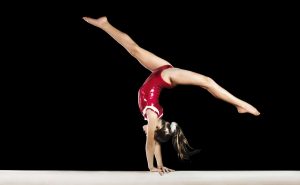In medical school, physicians-in-training spend countless hours learning about the human body. First, we are taught to understand the complexities of normal physiology and how such intricate systems can become unbalanced and deteriorate, leading to an endless and fascinating multitude of human diseases and illnesses. With this foundational knowledge, we set off to begin the practice of managing and manipulating the body and doing our best to slow its inevitable failure.
 In many hospitals, patients present as a result of cumulative negative stressors that have initiated a downward spiral, ultimately making them feel lousy. Chronic smoking, poor diet, alcohol, drugs, sedentary lifestyles — we have all heard about these negative stressors time and time again. Yet this past August, the world was given the opportunity to observe what happens to the human body in the setting of positive stressors. Athletes in the 2016 Summer Olympic Games are in many ways the opposite of the deteriorating hospital patient.
In many hospitals, patients present as a result of cumulative negative stressors that have initiated a downward spiral, ultimately making them feel lousy. Chronic smoking, poor diet, alcohol, drugs, sedentary lifestyles — we have all heard about these negative stressors time and time again. Yet this past August, the world was given the opportunity to observe what happens to the human body in the setting of positive stressors. Athletes in the 2016 Summer Olympic Games are in many ways the opposite of the deteriorating hospital patient.
In both athletes and sick patients, the human body operates at its limits, but in remarkably different ways. The Olympian, through years of relentless physical and mental training (i.e., positive stressors), has brought her body and mind to the frontiers of human strength, endurance, skill and fortitude. My evolving view of physiology and the ways that the human body can adapt to disease states have shaped my interpretations of world-class athletes. While I have always loved the Olympics, I watched the most recent games with newfound appreciation.
The diverse and impressive physiques of Olympic athletes are fascinating. Projects like ESPN The Magazine’s Body Issue, which features elegant nude photoshoots of world-class athletes, have brought attention to the remarkable variability of the athletic body in an attempt to change the dogma about ideal conceptions of beauty and strength. An interactive article in The New York Times highlights how different sports shape an athlete’s body. Swimmers, for example, are known for their thin, muscular upper bodies, broad shoulders and long torsos. Gymnasts are typically short, stocky and brawny, improving power-to-weight ratio and lowering moment of inertia.
Often, we attempt to explain unbelievable athletic performances through anatomical and inherited deviations. There are many articles about Baltimorean Michael Phelps’ massive “wingspan,” extended torso, short legs and abnormal flexibility — all desirable traits for a world-class swimmer — but these differences in anatomy likely provide only subtle advantages. The media speculate endlessly about how Jamaica, an island country of only 2.7 million people, can consistently produce the best sprinters in the world, including the world’s fastest man, Usain Bolt.
There are still no clear answers. In reality, perfect technique, uncompromising practice and dogged determination may be more essential for success than inherent, unique anatomical and genetic advantages. Of course, at the highest level of competition, a little luck in the genetic lottery doesn’t hurt either.
Finally, there is the chicken-or-the-egg problem of athletics. For instance, do short kids become gymnasts, or does gymnastics stunt growth? It is likely that children with some innate talent, an optimal body type and exceptionally commanding willpower self-select for specific sports, but ultimately, specialized training sculpts specialized physiques. So we can all rest assured (or feel guilty) knowing that the awe-inspiring performances and chiseled bodies at this year’s Olympic Games were the product of relentless practice and preparation more than anything else.
Here's a follow up. Maybe practice doesn't make perfect?
http://www.newyorker.com/science/maria-konnikova/practice-doesnt-make-perfect?mbid=nl_TNY%20Template%20-%20With%20Photo%20(99)&CNDID=45052925&spMailingID=9604701&spUserID=MTU5MzQyNzAxODQ4S0&spJobID=1002381008&spReportId=MTAwMjM4MTAwOAS2
Comments are closed.